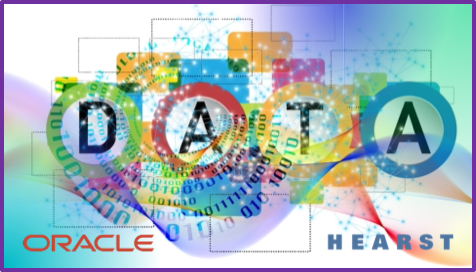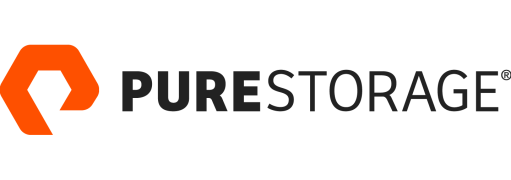
As more enterprises than ever embrace new AI-driven solutions, it’s worth remembering that technology modernization and transformation projects must address the human side of the process along with deploying advanced algorithms or adopting the latest tools. For years now, I’ve returned again and again in my writing to the two pillars of change management and data management, both of which are essential for turning technology aspirations into actionable outcomes.
Change management addresses the organizational and human aspects of transformation, while data management ensures that data completeness and quality are maintained so that insights drawn from data-driven systems are accurate, actionable, and timely. Long experience tells me that without both of these disciplines in place, enterprises will struggle to modernize applications, integrate workflows, or derive the technology-driven insights that will allow them to make informed decisions.
Recently I had the opportunity to talk about these principles with David Hovstadius, senior vice president of finance operations at Hearst Corporation. He paid close attention to both change management and data management when he led the company’s transition to Oracle Cloud ERP. Even though that ERP system was implemented some years ago, the groundwork laid then has continued to empower the media company to embrace the evolution of technology—and the continuous improvement of processes—as AI has come to the fore.
Hearst’s ERP Journey
Hearst began its modernization journey in November 2016 by transitioning to Oracle Fusion Cloud ERP, a SaaS application. The transformation was ambitious, encompassing 300 businesses across 60 locations and key functional areas such as finance, human resources, and procurement. The phased rollout started with a pilot in July 2017 and concluded in March 2018, providing a structured approach to managing complexity while maintaining operational continuity. When I talked with him, Hovstadius told me, “No one was talking about gen AI back in 2017. Our priority was to implement a SaaS platform and common data model that would allow us to adopt new capabilities and functionalities as they became available. At the time, we didn’t completely comprehend the value of this decision.”
Adopting the SaaS model was a strategic move, allowing Hearst to offload responsibilities such as system maintenance, updates, and testing to Oracle. This enabled Hearst’s finance operations and technology teams to leverage the system’s capabilities to enhance business outcomes rather than getting caught up in technical details.
The SaaS approach also marked a shift in mindset: Oracle evolved from being a service provider to a strategic business partner. This partnership allowed Hearst to integrate new tools, such as intelligent payment systems and automated financial processes, which proved crucial for navigating the complexities of the media industry. These tools simplified operations and enabled Hearst to adapt quickly to changing market demands and to promote innovation.
The Role of Change Management
The success of many ERP implementations depends on getting the organization and its employees to embrace change. For Hearst, transitioning to Oracle Cloud ERP meant moving away from legacy processes and adapting to technological advancements—as well as to organizational culture shifts. Hearst implemented change management strategies including early stakeholder engagement, structured training programs, and transparent communication to reduce staff resistance, minimize disruptions, and encourage employee buy-in.
Despite these proactive efforts, employee adoption of new processes remained a challenge, as is often the case when personnel have to navigate unfamiliar systems. To help smooth the process, Hovstadius and his team conducted roadshows, interactive workshops, and targeted training sessions. These initiatives went beyond merely teaching how system functionality works to helping users understand how the various ERP components are interconnected to support broader business objectives. Hearst achieved a smoother transition by helping employees see the system as an opportunity rather than a disruption. Hovstadius credits this approach as leading to minimal operational downtime and faster realization of the system’s value.
A key takeaway from Hearst’s experience is that effective change management extends well beyond technical implementation. It requires reshaping mindsets, improving collaboration, and building trust across teams. One effective strategy was appointing “change champions”—employees who advocated for the new system, addressed their colleagues’ concerns, and served as liaisons between leadership and end users. This collaborative approach reinforced the key insight that change management works best as a shared organizational effort rather than a top-down set of instructions.
Adapting to new processes and harmonizing data required employees to rethink their workflows. Hearst invested in comprehensive education, ensuring that employees were supported at every transition stage. Systematic sharing of best practices also played a critical role in easing the adjustment. Drawing on its experiences with change management during the ERP rollout, in 2023 Hearst used some of the same lessons—and further demonstrated its commitment to innovation—by establishing an AI working group to explore machine learning and AI technologies in the finance function.
The Significance of Data Management
Data management was another cornerstone of Hearst’s transformation. Accurate and consistent data flows are essential for any ERP system because they support decision making, operational efficiency, and long-term sustainability. Early in the ERP rollout process, Hearst extensively evaluated its data architecture to identify inefficiencies and establish a foundation for consistent monitoring and refinement. One example of an important outcome of this evaluation was the consolidation of 15 different charts of accounts into a single, standardized chart. Hovstadius said that this simplification revolutionized reporting processes, allowing senior leaders to access insights within minutes instead of hours or days.
In addition, integrating Oracle Cloud ERP and Oracle Fusion Cloud HCM systems with third-party platforms such as ADP payroll required introducing consistent data definitions across functions. This standardization enabled granular analyses of employee costs, categorized by dimensions such as function, region, and country. These detailed insights were transformative in themselves because they gave leaders a clearer view of operational performance and enabled data-driven decisions with unprecedented precision.
Hearst’s commitment to maintaining data quality was significant. Continuous monitoring practices were implemented to confirm that data remained reliable, actionable, and aligned with organizational goals. This emphasis on data integrity was more than a technical requirement; it was strategic. By reinforcing trust in the system’s outputs, Hearst ensured that the information resulting from the data was credible. And the company’s commitment to data quality continues today.
Building an AI-Ready Finance Platform
Hearst’s transformation extended beyond ERP-focused operational improvements to create a new foundation for integrating AI-driven innovations. The changes made back then proved to be valuable years later, when it became essential to understand AI and what could be achieved with it. As Hovstadius told me, “As we now look at AI/ML and what enables it, it is consistency in data and process, which means we are well positioned to continue to adopt these capabilities as they are released.” In other words, the hard work of data management and change management paid off in the successful ERP implementation years ago, but it has continued to pay dividends during the adoption of AI over the past couple of years.
Today the company is seeing significant efficiencies from AI-driven automation and standardization of Oracle ERP processes across eight business groups. These efforts have delivered tangible outcomes, such as automating discount proposals for early payment. That innovation alone has saved Hearst hundreds of thousands of dollars while strengthening supplier relationships. Another notable advancement was the implementation of intelligent document recognition, which modernized invoice matching processes and reduced manual errors.
Looking beyond these immediate applications, Hearst has also explored the potential of generative AI for financial narrative reporting. That capability promises to accelerate reporting processes while delivering deeper insights to support more strategic decision making. By continuing to adopt new AI capabilities in its ERP system, Hearst has positioned itself to remain responsive to evolving industry dynamics.
The Beneficial Outcomes of Good Change Management and Data Management
Hearst’s successful Oracle transformation reflected its deliberate focus on change management and data management. Operationally, Hearst integrated its 300 businesses, restructured finance, HR, and procurement processes, and standardized data structures to improve reporting timelines. More than that, it improved the company’s ability to innovate going forward. More recent AI-driven innovations have contributed to cost savings and better supply chain relationships. In the long run, practicing consistent data management and developing an AI-ready finance platform have enabled Hearst to keep adapting to the evolving media landscape.
Today, Hearst is seeing the dividends of its past transformation. Hovstadius said, “By developing a strong data strategy, creating a culture of innovation and experimentation, and instilling digital and technical skills in finance teams, we continue to embrace generative AI capabilities as they are introduced to improve productivity and insights. Change management will continue to be a priority as we adopt the latest AI features.”
For organizations pursuing similar transformations, Hearst’s experience offers a real-world example to follow. Effective change management must align people and teams, address resistance from affected stakeholders, and promote trust and collaboration. Emphasizing data quality from the outset is crucial, with early standardization laying the foundation for long-term success. Phased implementations can help manage complexity, while using integrated platforms facilitates cross-departmental alignment and operational efficiency.
By addressing both the technological and the human aspects of digital transformation, Hearst has demonstrated how organizations can achieve operational improvements while preparing for sustainable growth and innovation. Its experience underscores the importance of empowering teams, maintaining data integrity, and pursuing a well-defined strategic vision to achieve meaningful business outcomes. This is a great use case for enterprises starting their own transformation journeys.






















































































